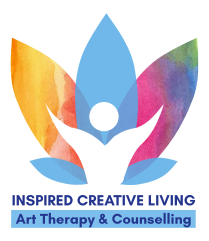What is Art Therapy?
Art therapy is a form of expressive therapy that uses the creative process of making art to improve your physical, mental, and emotional well-being. Through creating art and reflecting upon the process, you can increase your self-awareness and your awareness of others. Art therapy can provide a space that allows you to express hidden emotions and understand your unique issues. Art therapy is not solely to relax and do something pleasant, though that often is the case. Art therapy is used to gain insights and awareness in regards to a life struggle.
Who is Art Therapy for?
Art therapy is successfully used for all ages, from children to the elderly, and is gender diverse. Art therapy is available for all cultures and all religious beliefs. Everyone can benefit and everyone is welcomed.
What conditions/disorders can Art Therapy treat?
Positive results in Art Therapy may often be achieved by those facing issues such as:
- Anxiety
- Depression
- Stress
- General Life Issues
- Grief
- Employment Issues
- Aging and geriatric issues
- Cancer and illness
- Compassion fatigue
- Carers Support
- Support for Adolescence
- Cognitive impairments
- Family or relationship issues
How can Art Therapy help?
Art therapy can provide a sense of control when people are in a situation filled with many uncertainties. In addition, the simple act of creating art can help reduce stress, fear, and anxiety, and improve quality of life. Art therapy enables people to express feelings they may struggle to communicate with words. Using art, the therapist helps clients accomplish goals like these:
- Explore feelings
- Reconcile emotional conflicts
- Foster self-awareness
- Manage behaviour and addictions
- Develop social skills
- Increase self-esteem
- Intentional self-exploration that facilitates growth and gives insight
- Helps to move through life transition
Do I need to be good at art?
No, you do not have to be able to draw or paint to participate in art therapy.
Art therapy does not rely on artistic knowledge or ability. Art therapy is different to an art class. It is not the intention in an art therapy session to teach you anything about making art, even though you often learn many new skills.
The aim of participating in art therapy is to learn more about yourself. Art therapy is different to traditional ways of making art. The emphasis is placed on the process of creating the art piece, and the meaning derived from the art. Most revelations come from symbols and meaning that you attach to them.
Art therapy uses many art materials, such as paints, drawing, clay, collage, photography and even the written word, such as poetry. Though it may seem different and unnatural at first, it is typically because the individual is not used to communicating via the arts. The creative process can be one of the most rewarding aspects. Coupled with an art therapist, you should gradually, if not immediately, feel comfortable with this newfound form of expression.
The art therapist does not interpret your art work. You are asked to reflect upon your own creative work because it is understood that each individual brings their own cultural influence and personal experiences to their creative process. The client and art therapist work in collaboration with the aim of empowering the person to discover their own meaning.


